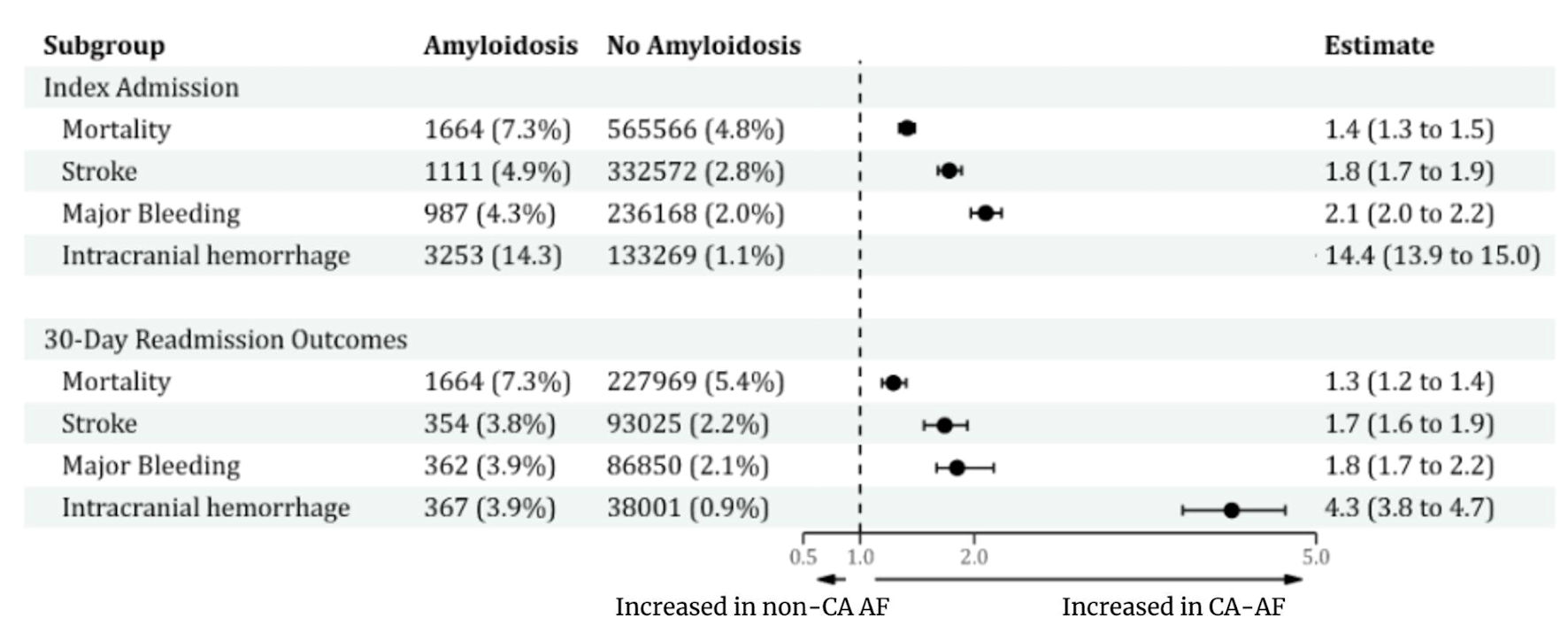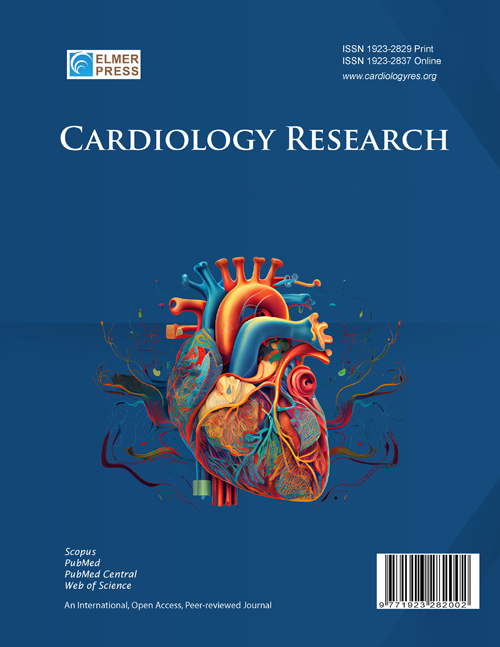Discriminative Accuracy of CHA2DS2-VASc Score, and Development of Predictive Accuracy Model Using Machine Learning for Ischemic Stroke Risk in Cardiac Amyloidosis and Atrial Fibrillation
DOI:
https://doi.org/10.14740/cr2101Keywords:
Cardiac amyloidosis, Atrial fibrillation, Ischemic stroke, CHA2DS2-VASc score, End-stage renal disease, Dementia, CancerAbstract
Background: CHA2DS2-VASc score in cardiac amyloidosis (CA) with atrial fibrillation (AF) is believed to underestimate ischemic stroke risk, necessitating a better predictive model.
Methods: Data were obtained from the National Readmission Database (NRD). Outcomes between CA-AF and no-CA-AF were compared using multivariate regression analysis to calculate adjusted odds ratios (aORs). AutoScore, an interpretable machine learning framework, was used to develop a stroke risk prediction model, and its predictive accuracy was evaluated with an area under the curve (AUC) using the receiver operating characteristic analysis.
Results: A total of 11,860,804 (CA-AF 22,687 (0.19%) and no-CA-AF 11,838,117) patients were identified from 2015 to 2019. The adjusted odds of mortality (aOR: 1.41 and 1.29), stroke (aOR: 1.78 and 1.74), non-intracranial hemorrhage (aOR: 2.10 and 1.85), and intracranial hemorrhage (aOR: 14.4 and 4.26) were significantly higher in CA-AF compared with non-CA-AF at both index admission and 30 days, respectively. The CHA2DS2-VASc score had a poor discriminative accuracy for stroke at 30 days in CA-AF (AUC 49%, 95% confidence interval (CI): 47 - 51, P = 0.54). The machine learning autoscore integrative model revealed excellent predictive ability of our newly proposed E-CHADS score (end-stage renal disease (ESRD), congestive heart failure (CHF), hypertension (HTN), cancer, dementia, and diabetes mellitus (DM)) for 30-day risk of ischemic stroke in CA-AF (cutoff of 52 points random forest score) with an AUC of 80% (95% CI: 74 - 86).
Conclusions: CA with AF carries a high risk of ischemic stroke that is not accurately predicted by the CHA2DS2-VASc score. Our proposed model (E-CHADS) identifies three new variables (ESRD, dementia, and cancer) that have higher discriminative accuracy for ischemic stroke in these patients.

Downloads
Published
Issue
Section
License
Copyright (c) 2025 The authors

This work is licensed under a Creative Commons Attribution-NonCommercial 4.0 International License.










